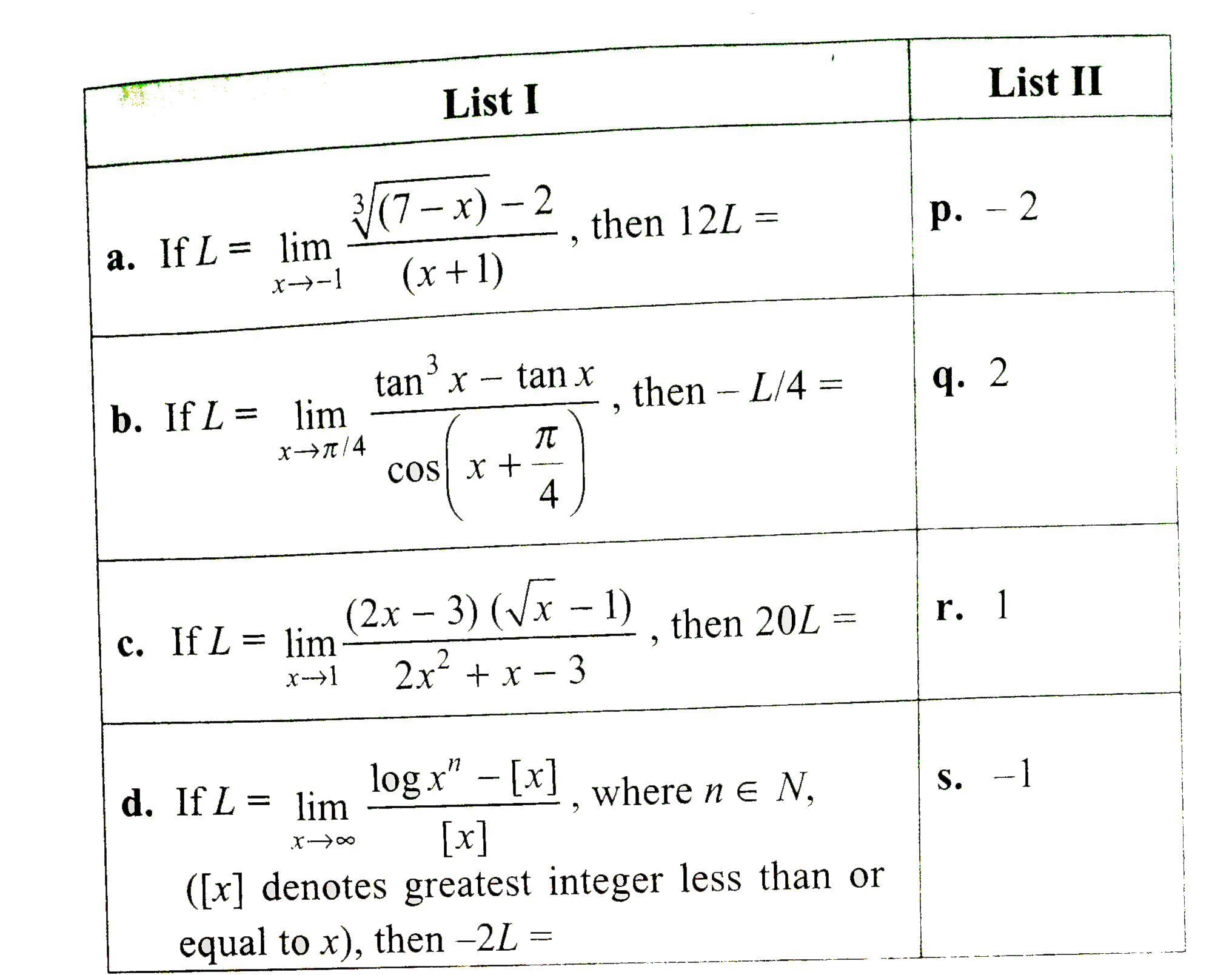limx→∞[(e1−e)(1e−x1+x)]x is :Solution in Bengali
limit does not exist when a=π/6
L=−1 when a=π
L=1 when a=π/2
L=1 when a=0
The correct Answer is:C
limx→∞[(e1−e)(1e−x1+x)]x=elimx→∞[(e1−e)(1e−x1+x)−1]x
=elimx→∞[11−e−e1−ex1+x−1]x
=elimx→∞[e1−e−e1−ex1+x]x
=elimx→∞e1−e[1−x1+x]x
=ee1−elimx→∞x1+x
=ee1−elimx→∞11+1x
=ee1−e
Topper's Solved these Questions
- BOOK - CENGAGE PUBLICATIONCHAPTER - LIMITSEXERCISE - Linked Comprehension Type20videos
LIMITS
- BOOK - CENGAGE PUBLICATIONCHAPTER - LIMITSEXERCISE - Matrix Match Type5videos
LIMITS
- BOOK - CENGAGE PUBLICATIONCHAPTER - LIMITSEXERCISE - EXERCISE 2.88videos
LIMITS
- BOOK - CENGAGE PUBLICATIONCHAPTER - JEE 2019EXERCISE - Chapter 108videos
JEE 2019
- BOOK - CENGAGE PUBLICATIONCHAPTER - LINEAR COMBINATION OF VECTORS, DEPENDENT AND INDEPENDENT VECTORSEXERCISE - DPP 1.210videos
LINEAR COMBINATION OF VECTORS, DEPENDENT AND INDEPENDENT VECTORS
Similar Questions
Letf(x)=sin−1(1−{x})×cos−1(1−{x})√2{x}×(1−{x}), where {x} denotes the fractional part of x.
L=limx→0−f(x) is equal to01:34View SolutionMatch the following lists:
 00:59View Solution
00:59View SolutionEvaluate limx→1cosπ2x1−√x
02:09View SolutionIf y = y(x) is the solution of the differential equation, xdydx+2y=x2 satisfying y(1) = 1, then y(12) is equal to
02:58View SolutionThe number of integral values of p for which (p+1)ˆi−3ˆj+pˆk,pˆi+(p+1)ˆj−3ˆk and −3ˆi+pˆj+(p+1)ˆk are linearly dependent vectors is q
02:57View Solutionlim_(x rarr0)(e^(1/x)-e^(-1/x))/(e^(1/x)+e^(-1/x))
02:26View SolutionEvaluate limx→∞logexx
05:40View Solutionlimx→0e1/x−1e1/x+1=
01:34View Solutionसिद्ध कीजिये कि-
limx→∞(1+ax)x=ea02:49View Solutionसिद्ध कीजिये कि-
limx→∞[(1+1x)x]=e02:53View Solutionसिद्ध कीजिये कि- limx→∞(1+2x)x=e2
View Solutionlimx→∞x[31x+1−cos(1x)−e1x]
01:26View SolutionIf x>0 and g is bounded function then limx→∞f(x)enx+g(x)enx+1
04:47View SolutionIf limx→∞(1+ax+bx2)2x=e2 then
01:05View Solutionপ্রমাণ করো,limx→elogx−1x−e=(1e)
07:05View SolutionThe value of limx→∞e1/x−e−1/xe1/x+e−1/x tan (1/x) is
04:25View Solution

